UPDATE: September 21, 2016
I originally published the info below before leaving on my trip in July 2015. Now, after a year on the road, I’ve decided to update this page with reviews of much of the equipment/gear/clothing I took along. I hope others find this helpful in planning their own trip, and feel free to contact me with any questions you may have. You can scroll down to the “Update” section to read the reviews, or start from the beginning for a listing of all of the equipment I took with me.
Note: I am not sponsored by any of the vendors or suppliers below. I choose to put the brand name of the gear I carry and use for the future benefit of others who may be interested, and for my own reference.
Bike:
2014 Yamaha XT250

Modifications:
- MSR skidplate
- Acerbis handguards
- RAM mounts for GPS and phone/media
- Garmin Zumo 550 GPS
- Rowe PDM60 Power Distribution Module
- Powerlet outlet for charging/air compressor
- Happy Trail SU rear racks and top rack
- Holan 31 Liter Nomada II Pro Panniers from ADVMotorrad
- Rotopax 1.75 gallon auxiliary fuel container with locking mount
- Race Tech rear shock re-valve and Eibach rear spring
- Race Tech front fork re-valve including cartridge emulators and stiffer springs
- Renthal handlebars
- Pirelli MT-21 tires
- SickSpeed 118dB horn
- Tool Tube
- 55/100W H4 headlight bulb
- 16T countershaft sprocket
- Oxford Heaterz heated grips
- SeatConcepts seat kit: foam and cover on stock pan
- Wolfman Enduro tank bag

Camping Gear:
- MSR Hubba Hubba 2 Tent
- Sierra Designs BackCountry Bed sleeping bag
- Exped Downmat 9LW sleeping mat
- Cocoon Mummyliner
- Exped inflatable pillow
- REI Flexlite chair
- Black Diamond head torch
MSR Whisperlite stove SnowPeak Giga Stove- Toaks titanium utinsels and mug
- PackTowl hand and bath towels
Clothing:
- UnderAmour t-shirts (2 long sleeve and 2 short sleeve)
- NorthFace convertible cargo pants
- NorthFace fleece pullover
- SmartWool socks (2 pr for riding boots; 1 pr for street shoes)
- UnderArmour briefs (3 pr)
- Merrill trail shoes
- Outdoor Research hat
- Swim Trunks
- Flip Flops
- FroggToggs rain suit (for when I’m off the bike)
Riding Gear:
- Klim Badlands Pro jacket and pants
- Shoei NeoTech modular helmet
- Alpinestars gloves (waterproof cold-weather)
- Klim Adventure gloves
- Forma Adventure boots
- Sena SMH10 bluetooth headset
Miscellaneous Gear:
- Delorme Inreach 2-way communicator
- PakSafe cable mesh security lock
- GorillaPod camera tripod
- Bike Cover
- Mechanix work gloves (can serve as another pair of riding gloves in a pinch)
- Bear Grylls mini backpack (packs tiny; use for misc trips about town)
- Ratchet strap tiedowns (2)
- First Aid Kit (not shown)
Spares:
- Oil filters (2 — they’re small)
- Air filter
- Spark plug
- Inner tubes (2)
- Tire patch kit
- Clutch and throttle cables
- Brake pads (front and rear)
- Clutch lever
- Front brake lever
- Shift pedal
- Clutch plates
- Clutch cover gasket
- Master link for chain
- Supply of spare nuts and bolts
Tool kit:
- Basic hand tools
- MotionPro mini tool kit
- MotionPro T-handle hex wrench (4,5,6mm)
- MotionPro T-handle socket wrench (8,10,12mm)
- Leatherman tool
- Small volt/ohm meter
- Tire levers
- CyclePump air compressor
- Duct tape and Zip ties (if it can’t be fixed with these and a rock, you’re gonna be there a while)
UPDATE: September 21, 2016
After a year on the road, living with the above gear (including approximately 130 days in my tent), I’ve decided to post some personal opinions/reviews of the equipment I took with me. So here goes:
Bike Gear
SeatConcepts Seat:  (5 / 5) After one year and 53,000km the foam and cover are still like new. Perfect fit. I never would have guessed that a flat seat on a little 250 could be so comfortable for so long. As I’ve said before, if I could only make one modification to this bike before leaving on a trip like this, the Seat Concepts seat kit would be it.
(5 / 5) After one year and 53,000km the foam and cover are still like new. Perfect fit. I never would have guessed that a flat seat on a little 250 could be so comfortable for so long. As I’ve said before, if I could only make one modification to this bike before leaving on a trip like this, the Seat Concepts seat kit would be it.
RaceTech Suspension Modifications:  (4 / 5) This is really a combination of rider preference and correct setup for the weight I carried. The XT250 suspension is very soft out of the crate, and RaceTech hadn’t done a lot of XT250s for Round-the-World travel by a 6-foot-plus, 200 pound guy with a lot of off-road experience (let’s face it, that’s not the intended market for this bike). So I wasn’t expecting much when I contacted Matt Wiley at RaceTech to inquire about valving and springs for this old-school-style suspension. Matt was able to put together a set of RaceTech’s Gold Valves and stiffer springs (adapters needed for the rear shock) that worked great. The front fork set-up was spot-on and worked fantastic over the corrugated dirt roads (“ripio”) in Argentina as well as just carving through the paved mountain passes in South America and Europe. The rear shock required a bit more fiddling, and probably needs a slightly softer spring than the one I chose.
(4 / 5) This is really a combination of rider preference and correct setup for the weight I carried. The XT250 suspension is very soft out of the crate, and RaceTech hadn’t done a lot of XT250s for Round-the-World travel by a 6-foot-plus, 200 pound guy with a lot of off-road experience (let’s face it, that’s not the intended market for this bike). So I wasn’t expecting much when I contacted Matt Wiley at RaceTech to inquire about valving and springs for this old-school-style suspension. Matt was able to put together a set of RaceTech’s Gold Valves and stiffer springs (adapters needed for the rear shock) that worked great. The front fork set-up was spot-on and worked fantastic over the corrugated dirt roads (“ripio”) in Argentina as well as just carving through the paved mountain passes in South America and Europe. The rear shock required a bit more fiddling, and probably needs a slightly softer spring than the one I chose.
Renthal Handlebars:  (5 / 5) Way stronger than the stock bars. Great fit, very comfortable. I consider this a “must-have” if you’re setting off on a long trip, especially if you’re going to spend any amount of time off-road. The stock bars don’t have a cross-bar, and tend to bend when dropped. The Renthals are much stronger. I used the “CR High” bars, which are slightly taller than stock, and slightly wider (you may need to cut the ends of the bars slightly to allow for proper cable reach).
(5 / 5) Way stronger than the stock bars. Great fit, very comfortable. I consider this a “must-have” if you’re setting off on a long trip, especially if you’re going to spend any amount of time off-road. The stock bars don’t have a cross-bar, and tend to bend when dropped. The Renthals are much stronger. I used the “CR High” bars, which are slightly taller than stock, and slightly wider (you may need to cut the ends of the bars slightly to allow for proper cable reach).
Oxford Grip Heaterz:  (5 / 5) Durable, functional, and easy to use with a great little digital heat controller that is easy to use with winter gloves and never failed. I was surprised how much I used these. The grips held up great with very little wear after 53,000 km. Be sure to follow the glue instructions properly to keep them from coming loose.
(5 / 5) Durable, functional, and easy to use with a great little digital heat controller that is easy to use with winter gloves and never failed. I was surprised how much I used these. The grips held up great with very little wear after 53,000 km. Be sure to follow the glue instructions properly to keep them from coming loose.
Acerbis Handguards:  (4 / 5) Strong, Install-and-forget, Positioning can be limited by brake hose and cables, but there are alternative brackets available that help add clearance in these areas. Either install these before you leave, or pack a bunch of spare levers with you. I had a few tumbles and the bike got blown over by the wind once in South Africa. I never had a damaged lever thanks to these handguards.
(4 / 5) Strong, Install-and-forget, Positioning can be limited by brake hose and cables, but there are alternative brackets available that help add clearance in these areas. Either install these before you leave, or pack a bunch of spare levers with you. I had a few tumbles and the bike got blown over by the wind once in South Africa. I never had a damaged lever thanks to these handguards.
DMO Specialties Wide Footpegs:  (5 / 5) Strong, Durable, Comfortable, Easy to install. I’m always nervous about installing aftermarket pegs, because I spend a lot of time standing on them, especially offroad, and if one were to fail, it could be bad. These look as good now as they did when I installed them.
(5 / 5) Strong, Durable, Comfortable, Easy to install. I’m always nervous about installing aftermarket pegs, because I spend a lot of time standing on them, especially offroad, and if one were to fail, it could be bad. These look as good now as they did when I installed them.
Happy Trails Pannier and Rear Rack System:  (3.5 / 5) The only real system available for the XT250. Fairly good fit though the hardware is cheap (if you install this using their hardware you’ll need to pack a 13mm wrench in your tool kit…nothing else on the bike uses a 13mm wrench). Adaptable to soft or hard panniers. I bought the top plate to put on top of the rear rack (makes a big flat table area), and although the top rack has a bunch of pre-cut holes in it (it’s a universal piece even though it’s sold on their website for the XT250), none of the holes match up to the top rack, and it doesn’t come with any mounting hardware, so you’re on your own to figure out how to mount the top plate to the rack. I ended up welding tabs to the rack so that I could bolt the top rack directly to it. The pannier racks also come with turn signal relocation brackets that aren’t well designed, allowing the turn signals to “droop” over time, and the right rear turn signal can get in the exhaust flow and melt. I tossed the turn signal brackets and welded tabs onto the rear rack to mount my turn signals.
(3.5 / 5) The only real system available for the XT250. Fairly good fit though the hardware is cheap (if you install this using their hardware you’ll need to pack a 13mm wrench in your tool kit…nothing else on the bike uses a 13mm wrench). Adaptable to soft or hard panniers. I bought the top plate to put on top of the rear rack (makes a big flat table area), and although the top rack has a bunch of pre-cut holes in it (it’s a universal piece even though it’s sold on their website for the XT250), none of the holes match up to the top rack, and it doesn’t come with any mounting hardware, so you’re on your own to figure out how to mount the top plate to the rack. I ended up welding tabs to the rack so that I could bolt the top rack directly to it. The pannier racks also come with turn signal relocation brackets that aren’t well designed, allowing the turn signals to “droop” over time, and the right rear turn signal can get in the exhaust flow and melt. I tossed the turn signal brackets and welded tabs onto the rear rack to mount my turn signals.
Holan Nomada Aluminum Panniers:  (4.5 / 5) Solid, tough, reliable. After 53,000km and a few crashes and tip-overs, these are still excellent. The gaskets are still perfect and they are still water-tight. The only noticeable wear is in the latches due to me opening them from one end and letting the latch support the lid with my heavy bag strapped to the top of the lid. It’s a shame these aren’t better known in the US; in my opinion they are the absolute best on the market.
(4.5 / 5) Solid, tough, reliable. After 53,000km and a few crashes and tip-overs, these are still excellent. The gaskets are still perfect and they are still water-tight. The only noticeable wear is in the latches due to me opening them from one end and letting the latch support the lid with my heavy bag strapped to the top of the lid. It’s a shame these aren’t better known in the US; in my opinion they are the absolute best on the market.
MSR Skid plate:  (4 / 5) Easy install; Good fit; Drain plug access good, but still makes a mess when changing oil. Won’t fit CA models without modification (Carbon canister)
(4 / 5) Easy install; Good fit; Drain plug access good, but still makes a mess when changing oil. Won’t fit CA models without modification (Carbon canister)
Wolfman Expedition Tank Bag:  (4 / 5) Good fit, even on this small bike’s small tank. Lots of storage space and pockets. Install the straps and forget them. Rain cover is far from waterproof.
(4 / 5) Good fit, even on this small bike’s small tank. Lots of storage space and pockets. Install the straps and forget them. Rain cover is far from waterproof.
Pirelli MT21 tires:  (4.5 / 5) Very predictable on and off road, even in the wet; Good fit and good wear considering they are full knobbies. In 53,000km, I never had a single flat tire.
(4.5 / 5) Very predictable on and off road, even in the wet; Good fit and good wear considering they are full knobbies. In 53,000km, I never had a single flat tire.
Sunstar 16T countershaft sprocket:  (5 / 5) Good fit, good wear, good gearing choice for distance touring on the XT250.
(5 / 5) Good fit, good wear, good gearing choice for distance touring on the XT250.
RotoPax Fuel and Water Containers & Mounting System:
1.75 gal fuel:  (4.5 / 5)
(4.5 / 5)
3.0 gal fuel:  (3 / 5)
(3 / 5)
1.0 gal water:  (4.5 / 5)
(4.5 / 5)
I should have stayed with the 1.75 gallon fuel container for the entire trip; I didn’t need the 3 gallon container anywhere I went, and the 3 gallon container leaked at the cap most of the time, where the 1.75 gallon never did. The one gallon water container was invaluable in Africa for cooking and daily water needs. The mounting system (with lock) works well, though the lock needed to be lubed occasionally because dirt would get in it because it faced up. Being able to stack two cans and lock them in place was nice.
Ortlieb 41 Liter Rack Bag:  (4.5 / 5) Super tough. Stood up to a lot of abuse, until the RotoPax mount wore a hole through the bottom of it, and of course it was no longer waterproof after that. I will buy another of these bags and take it with me everywhere.
(4.5 / 5) Super tough. Stood up to a lot of abuse, until the RotoPax mount wore a hole through the bottom of it, and of course it was no longer waterproof after that. I will buy another of these bags and take it with me everywhere.
Kriega Tool Roll:  (5 / 5) Took a beating, got thrown in the dirt and on the pavement quite a bit, bounced around inside my PVC tool tube, and never lost a thread or rubbed a hole in it. Had room for more tools than I carried.
(5 / 5) Took a beating, got thrown in the dirt and on the pavement quite a bit, bounced around inside my PVC tool tube, and never lost a thread or rubbed a hole in it. Had room for more tools than I carried.
Camping Gear
MSR Hubba Hubba Tent:  (4.5 / 5) Durable; Comfortable; Quick pitch and teardown; Two Doors; Vestibules nice but limited storage if using with two people; Gear attic nice but can cause small damage to mesh if tent is folded up with gear attic still attached; Seams of rain fly need to be re-sealed after about 100 days of use; DAC poles excellent; plenty of interior room for one person and gear, or possibly two people with no gear inside (the “Gear Shed” that I purchased with my Hubba Hubba is huge and I could store a lot of gear in it, but I chose not to take it since it was just me in the tent).
(4.5 / 5) Durable; Comfortable; Quick pitch and teardown; Two Doors; Vestibules nice but limited storage if using with two people; Gear attic nice but can cause small damage to mesh if tent is folded up with gear attic still attached; Seams of rain fly need to be re-sealed after about 100 days of use; DAC poles excellent; plenty of interior room for one person and gear, or possibly two people with no gear inside (the “Gear Shed” that I purchased with my Hubba Hubba is huge and I could store a lot of gear in it, but I chose not to take it since it was just me in the tent).
Exped Downmat 9LW Air Mattress:  (4 / 5) Easily inflated; extremely comfortable; relatively compact when stored. I had one fail in Argentina (one of the internal baffles came loose), and Exped replaced it free of charge. The new one came with a “Schnozzel” air bag inflator rather than the integral hand pump that was built into the original mattress. The Schnozzle is quicker and easier than the integral pump. It takes a few tries to figure out how much air is right for you (hint: don’t over-inflate it), but once you do, you can’t beat it.
(4 / 5) Easily inflated; extremely comfortable; relatively compact when stored. I had one fail in Argentina (one of the internal baffles came loose), and Exped replaced it free of charge. The new one came with a “Schnozzel” air bag inflator rather than the integral hand pump that was built into the original mattress. The Schnozzle is quicker and easier than the integral pump. It takes a few tries to figure out how much air is right for you (hint: don’t over-inflate it), but once you do, you can’t beat it.
Sierra Designs Backcountry Bed sleeping bag:  (3.5 / 5) If you don’t like the restrictions of a mummy bag, you’ll probably like this bag. No zipper, the top folds down like a comforter. It’s easy to turn over and move around inside it comfortably, and it feels more like a bed with a comforter than a sleeping bag. Only real complaint: there’s an opening at the bottom that you can stick your feet out of, in case you want to “wear” the bag like a comforter (I imagine sitting in a chair at night watching the stars), and then you can walk around while in it. Several times while sliding into the bag at night or rolling over, I inadvertently stuck my feet out of the bottom of the bag.
(3.5 / 5) If you don’t like the restrictions of a mummy bag, you’ll probably like this bag. No zipper, the top folds down like a comforter. It’s easy to turn over and move around inside it comfortably, and it feels more like a bed with a comforter than a sleeping bag. Only real complaint: there’s an opening at the bottom that you can stick your feet out of, in case you want to “wear” the bag like a comforter (I imagine sitting in a chair at night watching the stars), and then you can walk around while in it. Several times while sliding into the bag at night or rolling over, I inadvertently stuck my feet out of the bottom of the bag.
Black Diamond Head Torch:  (2.5 / 5) Acceptable but not great. Need to carry extra batteries. Failed after 11 months. This light uses 3 AAA batteries, which last quite a while but require that you carry at least three extra batteries for safety. It puts out a decent amount of light when the batteries are fresh, but there are a lot better head torches out there (and yes, they cost more than this one). Next time I’ll seriously consider a Pietzl. Takes up slightly more storage space, a little heavier and a bit more pricey, but worth it for the light and ability to recharge the battery,
(2.5 / 5) Acceptable but not great. Need to carry extra batteries. Failed after 11 months. This light uses 3 AAA batteries, which last quite a while but require that you carry at least three extra batteries for safety. It puts out a decent amount of light when the batteries are fresh, but there are a lot better head torches out there (and yes, they cost more than this one). Next time I’ll seriously consider a Pietzl. Takes up slightly more storage space, a little heavier and a bit more pricey, but worth it for the light and ability to recharge the battery,
SnowPeak Giga Stove:  (4 / 5) Extremely small, lightweight, durable, no cleaning necessary after one year of use. Igniter can be finicky but once I figured it out I never had to use a butane lighter again (though it’s still a good idea to carry the lighter as a backup). Gas canisters available nearly everywhere; I never failed to find gas, but always carried two so I had a backup. Having previously used a MSR Whisperlite International stove running petrol (gasoline) from the bike, I still prefer the SnowPeak and gas canisters. Most people point out that with the Whisperlite, they don’t have to carry gas canisters, since they already have the fuel on the bike. But you still have to carry the fuel bottle for the stove, so it isn’t really saving space. Plus, the Whisperlite puts out a lot of soot, requiring cleaning and maintenance, whereas with the SnowPeak, I just pack it up. No cleaning, no mess, no maintenance (so far at least). Although to be fair, the Whisperlite will probably boil water faster than the SnowPeak. The SnowPeak Giga is very small, so you probably won’t be preparing large feasts with it; I had no problem cooking eggs, sausage, bacon, pasta, etc as well as my morning coffee each day. While probably not necessary, I used the optional wind-break on my stove all the time.
(4 / 5) Extremely small, lightweight, durable, no cleaning necessary after one year of use. Igniter can be finicky but once I figured it out I never had to use a butane lighter again (though it’s still a good idea to carry the lighter as a backup). Gas canisters available nearly everywhere; I never failed to find gas, but always carried two so I had a backup. Having previously used a MSR Whisperlite International stove running petrol (gasoline) from the bike, I still prefer the SnowPeak and gas canisters. Most people point out that with the Whisperlite, they don’t have to carry gas canisters, since they already have the fuel on the bike. But you still have to carry the fuel bottle for the stove, so it isn’t really saving space. Plus, the Whisperlite puts out a lot of soot, requiring cleaning and maintenance, whereas with the SnowPeak, I just pack it up. No cleaning, no mess, no maintenance (so far at least). Although to be fair, the Whisperlite will probably boil water faster than the SnowPeak. The SnowPeak Giga is very small, so you probably won’t be preparing large feasts with it; I had no problem cooking eggs, sausage, bacon, pasta, etc as well as my morning coffee each day. While probably not necessary, I used the optional wind-break on my stove all the time.
REI Folding Camp Chair with DAC poles:  (4.5 / 5) I love this chair. It’s light, packs down small, and is very comfortable. The large DAC tubes are strong and I never had a problem with it. The seat material wipes dry quickly after a rainy night so you can sit in the chair the next morning. I had a lot of comments from other campers asking about my chair and where I bought it; the same chair is sold under several other brand names. The only complaint I can think of is that when you fold the chair up, the tubes sometimes get “tangled” up causing the overall package to be a little bigger than it should. A few extra seconds of attention to detail will prevent this.
(4.5 / 5) I love this chair. It’s light, packs down small, and is very comfortable. The large DAC tubes are strong and I never had a problem with it. The seat material wipes dry quickly after a rainy night so you can sit in the chair the next morning. I had a lot of comments from other campers asking about my chair and where I bought it; the same chair is sold under several other brand names. The only complaint I can think of is that when you fold the chair up, the tubes sometimes get “tangled” up causing the overall package to be a little bigger than it should. A few extra seconds of attention to detail will prevent this.
Clothing/Riding Gear
Klim Badlands Pro Jacket & Pants:  (3.5 / 5) Tough, durable, but wear on pants from contact with tank bag (WTF?!?), Zipper failure, Jacket zipper malfunctions, small thread failures here and there on jacket and pants. For the price, I expected better customer service. The overall durability was good. but for that kind of money, should have been better. I followed the instructions for washing, reapplying water repellent, and drying, but it seems like the GoreTex has just lost its’ ability to repel water. I was soaked through in England and Switzerland after heavy/long rains.
(3.5 / 5) Tough, durable, but wear on pants from contact with tank bag (WTF?!?), Zipper failure, Jacket zipper malfunctions, small thread failures here and there on jacket and pants. For the price, I expected better customer service. The overall durability was good. but for that kind of money, should have been better. I followed the instructions for washing, reapplying water repellent, and drying, but it seems like the GoreTex has just lost its’ ability to repel water. I was soaked through in England and Switzerland after heavy/long rains.
Klim Adventure gloves:  (4 / 5) Good fit, very comfortable, durable. Eventually I had a couple of holes in the nylon material (not in a critical area). I thought these gloves were a bit pricey at USD$89, but I just noticed that they have been discontinued and replaced by a “New” Adventure model at $179!! It looks to me like the Dakar Pro glove in their current lineup is similar to my old-style “Adventure” gloves.
(4 / 5) Good fit, very comfortable, durable. Eventually I had a couple of holes in the nylon material (not in a critical area). I thought these gloves were a bit pricey at USD$89, but I just noticed that they have been discontinued and replaced by a “New” Adventure model at $179!! It looks to me like the Dakar Pro glove in their current lineup is similar to my old-style “Adventure” gloves.
Alpinestars Drystar SR3 Waterproof Gloves:  (2.5 / 5) Terrible fit, took three tries to get a pair that I could wear. Eventually had to buy XXL in order to get my hands in the gloves, but then the fingers were way too long. Worked well in the rain with reasonable “feel” for thicker gloves, but the fingers being too long caused problems with good lever control.
(2.5 / 5) Terrible fit, took three tries to get a pair that I could wear. Eventually had to buy XXL in order to get my hands in the gloves, but then the fingers were way too long. Worked well in the rain with reasonable “feel” for thicker gloves, but the fingers being too long caused problems with good lever control.
Shoei NeoTec Helmet:  (3.5 / 5) I really want to give this helmet a higher rating, but a number of little things prevent me from doing so. After using it for a year, I can say I would struggle to do this kind of trip with anything but a flip-front helmet. The ability to flip it up to get a drink, to speak with checkpoint officers, or just to talk to the petrol attendant is nice. Downsides: if you crack the shield at all in the rain, it rains down the inside of the shield (use a Pinlock shield and you won’t have to open it because it won’t fog in the rain); it’s noisy compared to a non-flip-front full coverage helmet.
(3.5 / 5) I really want to give this helmet a higher rating, but a number of little things prevent me from doing so. After using it for a year, I can say I would struggle to do this kind of trip with anything but a flip-front helmet. The ability to flip it up to get a drink, to speak with checkpoint officers, or just to talk to the petrol attendant is nice. Downsides: if you crack the shield at all in the rain, it rains down the inside of the shield (use a Pinlock shield and you won’t have to open it because it won’t fog in the rain); it’s noisy compared to a non-flip-front full coverage helmet.
Sena SMH10 Bluetooth Headset:  (4.5 / 5) Always worked. After a year, the contacts between the headset module and the helmet mount became a bit wide, and I had to move the module around a bit to get good contact otherwise I’d lose sound in one speaker. Simple controls and easy to operate even with heavy winter gloves. The bass in the speakers isn’t great, but the newer models are better.
(4.5 / 5) Always worked. After a year, the contacts between the headset module and the helmet mount became a bit wide, and I had to move the module around a bit to get good contact otherwise I’d lose sound in one speaker. Simple controls and easy to operate even with heavy winter gloves. The bass in the speakers isn’t great, but the newer models are better.
Forma Adventure Boots:  (3.5 / 5) They look like motocross boots, but they aren’t. They have much less support and armor in them, which allows for all-day comfort and the ability to walk around in them, but it also means less protection. Far from waterproof as well. Good soles, good durability.
(3.5 / 5) They look like motocross boots, but they aren’t. They have much less support and armor in them, which allows for all-day comfort and the ability to walk around in them, but it also means less protection. Far from waterproof as well. Good soles, good durability.
NorthFace Convertible Pants:  (4.5 / 5) It’s hard to complain too much about the one pair of pants I brought on this trip. Yep, any time I wasn’t wearing my Klim riding gear, I was wearing this one pair of pants. That’s a lot to ask out of a pair of pants, and I did have the stitching in the crotch fail but I sewed them up and continued to use them. Overall they wore better than the $600 Klim pants (how come the tank bag doesn’t wear out the NorthFace pants where they contact, but the $650 Klim Badlands pants can’t deal with it?)
(4.5 / 5) It’s hard to complain too much about the one pair of pants I brought on this trip. Yep, any time I wasn’t wearing my Klim riding gear, I was wearing this one pair of pants. That’s a lot to ask out of a pair of pants, and I did have the stitching in the crotch fail but I sewed them up and continued to use them. Overall they wore better than the $600 Klim pants (how come the tank bag doesn’t wear out the NorthFace pants where they contact, but the $650 Klim Badlands pants can’t deal with it?)
UnderArmour t-shirts:  (4.5 / 5) I carried three of these with me, and now I hardly ever wear anything else. In fact, I’ve tried to wear some of my old cotton t-shirts, and I find that they feel heavy, don’t breathe, and feel dirty after one day. The UA shirts are thin, lightweight, dry quickly if you sweat in them, wash easily and dry quickly, pack small and can be worn for several days without getting smelly.
(4.5 / 5) I carried three of these with me, and now I hardly ever wear anything else. In fact, I’ve tried to wear some of my old cotton t-shirts, and I find that they feel heavy, don’t breathe, and feel dirty after one day. The UA shirts are thin, lightweight, dry quickly if you sweat in them, wash easily and dry quickly, pack small and can be worn for several days without getting smelly.
UnderArmour boxers:  (4.5 / 5) Like the UA shirts, they are extremely light, extremely comfortable, wash and dry quickly, and can be worn for more than a day (or two) without getting smelly (sorry, but it’s true…). I don’t wear any other brand or type now. I started the trip with three pair, and after one year, one pair has one tiny hole. All three still have perfect elastic in the waist and legs, and it’s virtually impossible to tell the difference between the three pair I wore for a year and the new pair I just bought.
(4.5 / 5) Like the UA shirts, they are extremely light, extremely comfortable, wash and dry quickly, and can be worn for more than a day (or two) without getting smelly (sorry, but it’s true…). I don’t wear any other brand or type now. I started the trip with three pair, and after one year, one pair has one tiny hole. All three still have perfect elastic in the waist and legs, and it’s virtually impossible to tell the difference between the three pair I wore for a year and the new pair I just bought.
Smartwool socks:  (4.5 / 5) I can’t imagine wearing cotton socks ever again. Same as wearing a cotton t-shirt. No thanks. SmartWool dries fast, is comfortable, breathes well, doesn’t smell. I bought a thin pair of sock liners at an outdoor store in Cape Town, and often wore the sock liners inside the SmartWool socks, even in the extreme Africa heat. Very comfortable.
(4.5 / 5) I can’t imagine wearing cotton socks ever again. Same as wearing a cotton t-shirt. No thanks. SmartWool dries fast, is comfortable, breathes well, doesn’t smell. I bought a thin pair of sock liners at an outdoor store in Cape Town, and often wore the sock liners inside the SmartWool socks, even in the extreme Africa heat. Very comfortable.
Merrill Trail Shoes:  (3 / 5) Lightweight and pricey. Other than a pair of flip-flops and my Forma Adventure boots, these are the only shoes I took. I put a pair of Dr Scholls gel inserts in them before I left home. They got used in the water in Guatemala and Nicaragua; otherwise they were used for walking around. The soles split, and the toe started coming apart on one of them, but I continued to wear them till the end. I wouldn’t buy these again. I’ll find something a little more durable and sacrifice a little extra weight for durability.
(3 / 5) Lightweight and pricey. Other than a pair of flip-flops and my Forma Adventure boots, these are the only shoes I took. I put a pair of Dr Scholls gel inserts in them before I left home. They got used in the water in Guatemala and Nicaragua; otherwise they were used for walking around. The soles split, and the toe started coming apart on one of them, but I continued to wear them till the end. I wouldn’t buy these again. I’ll find something a little more durable and sacrifice a little extra weight for durability.


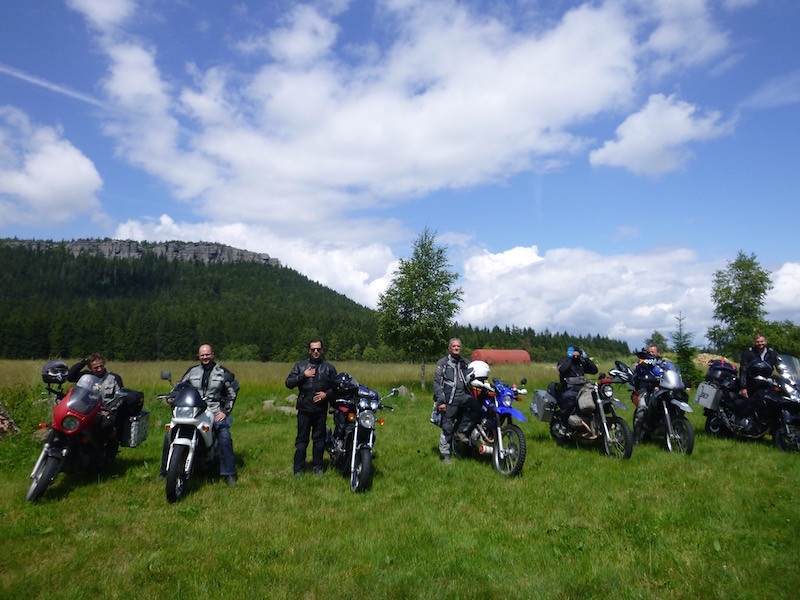
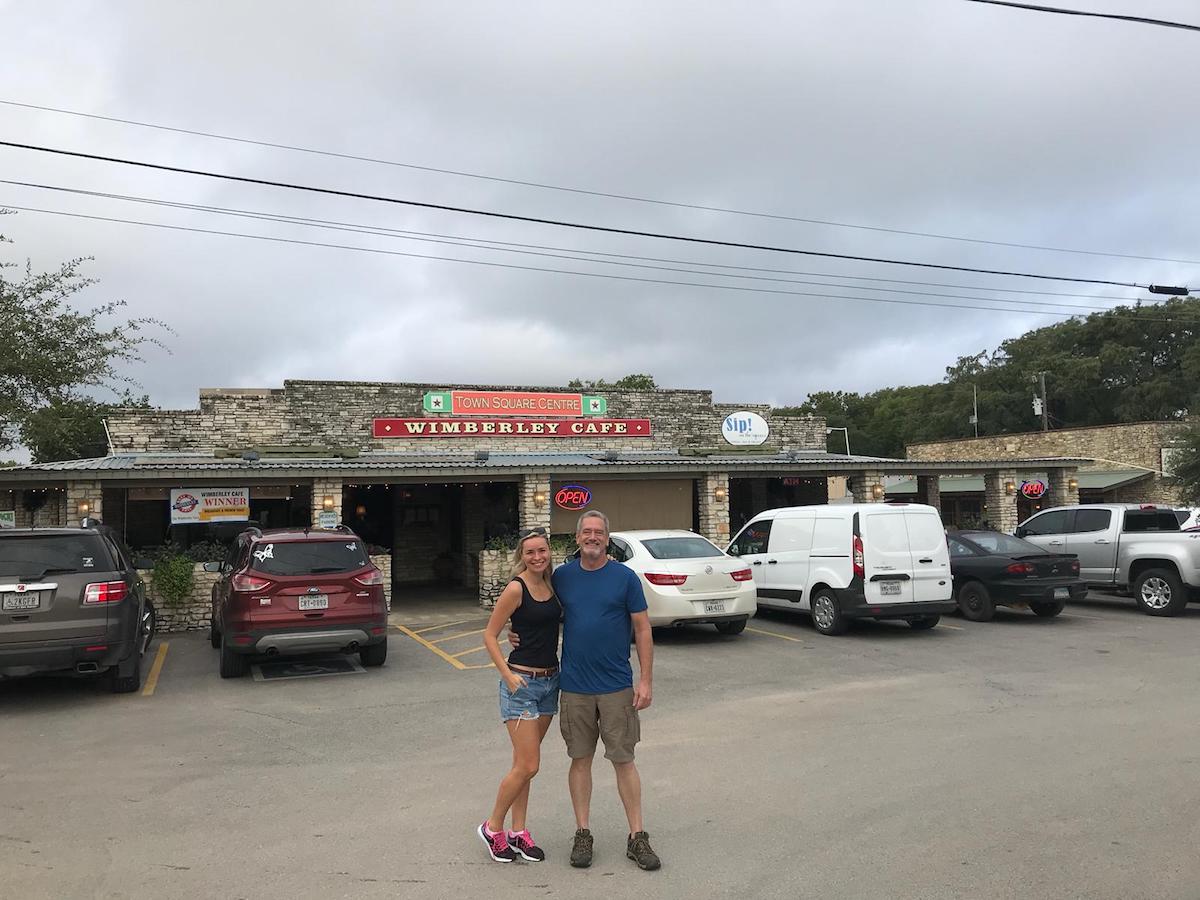
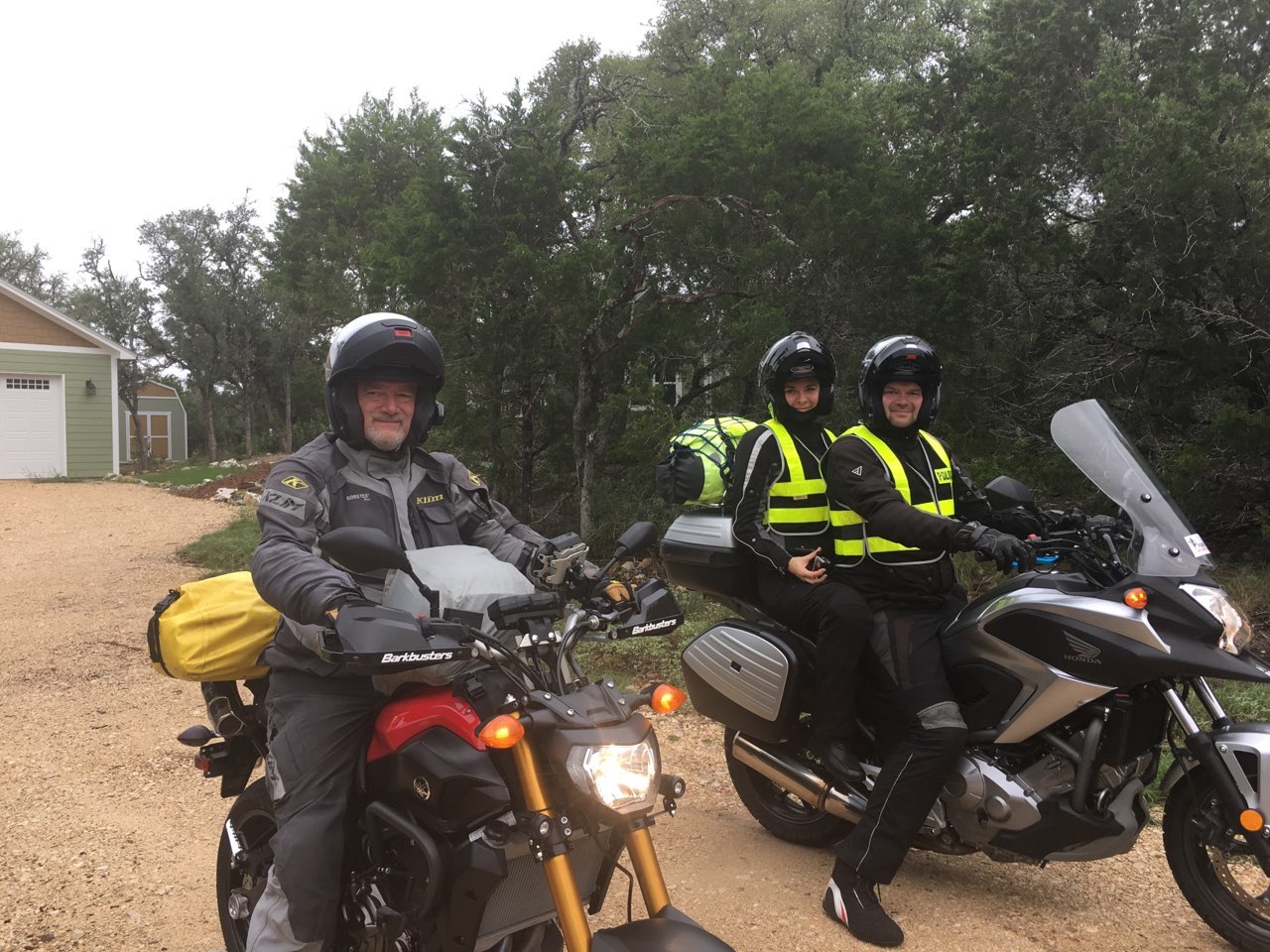
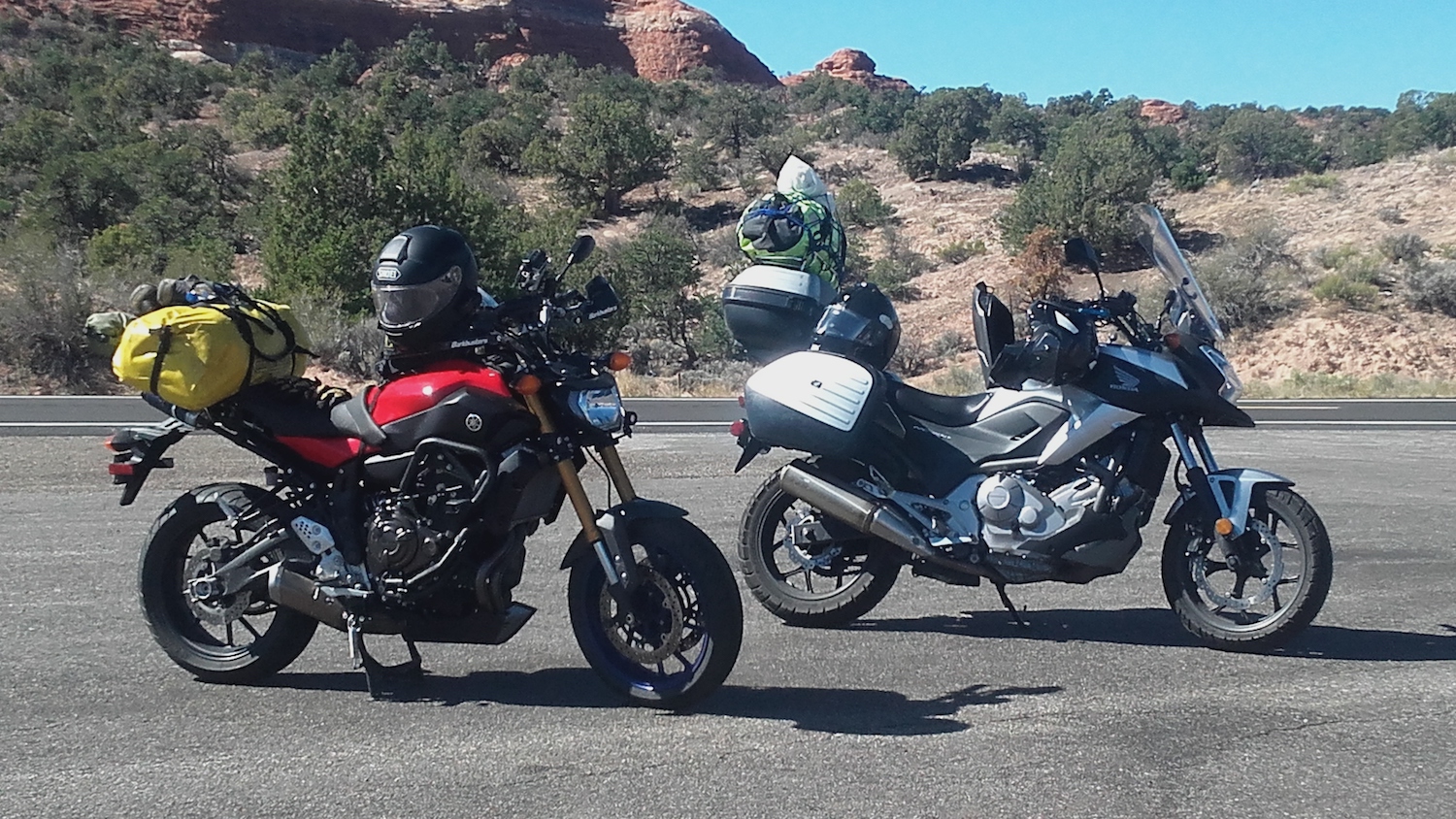

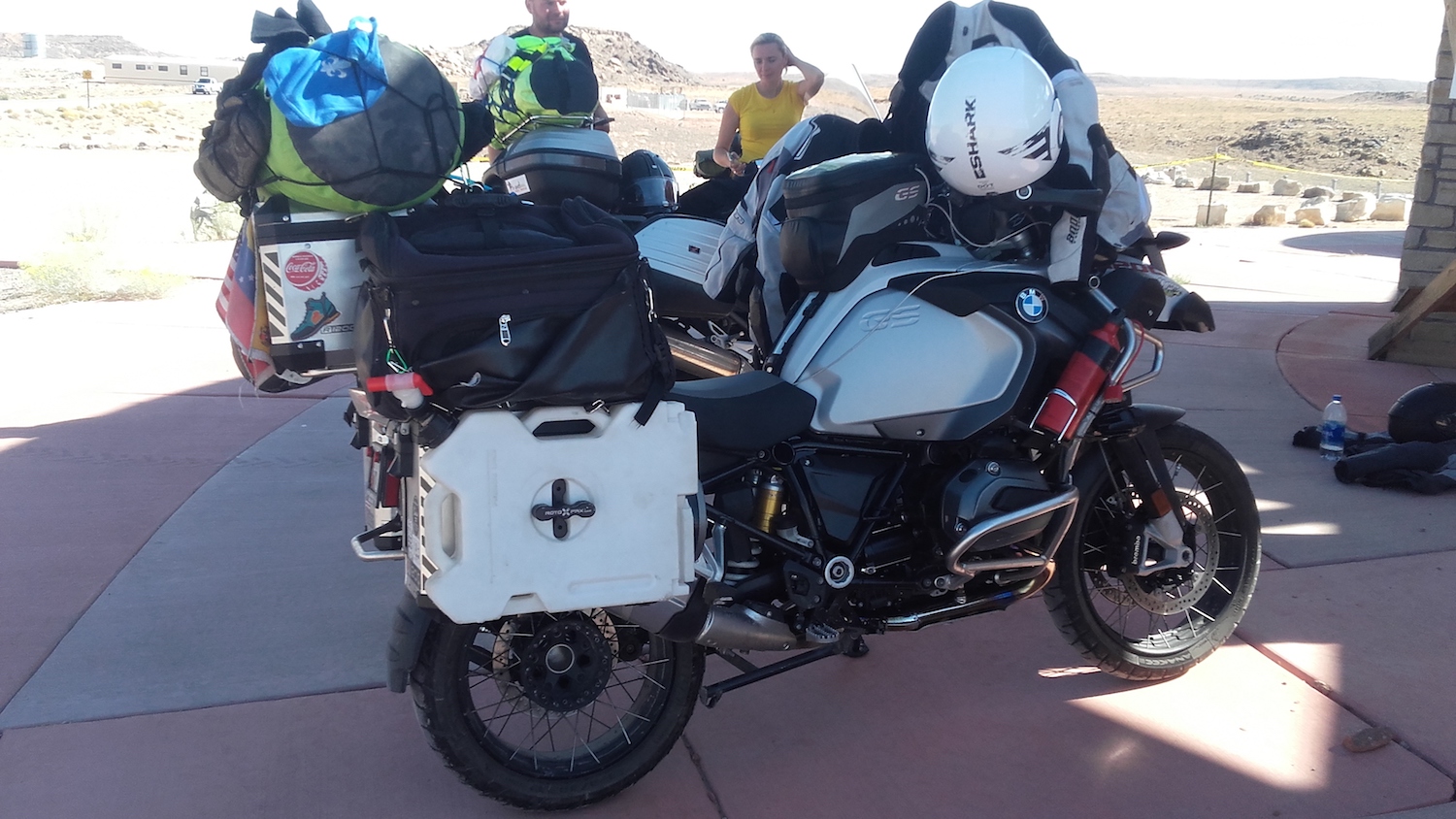
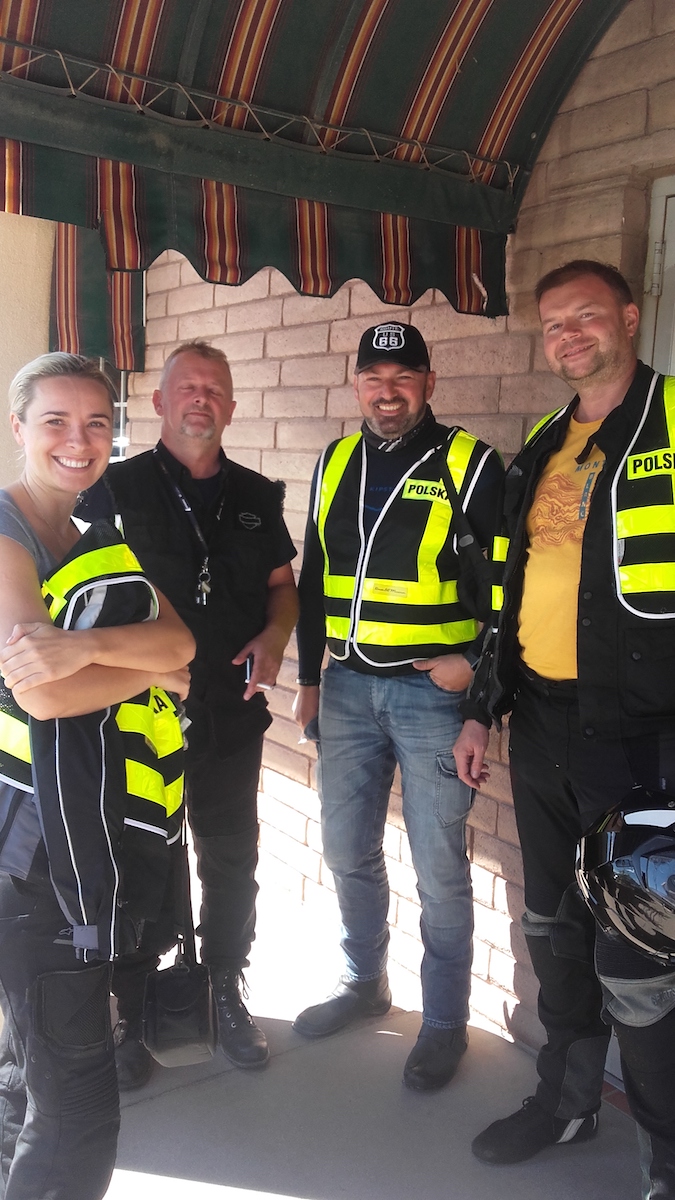
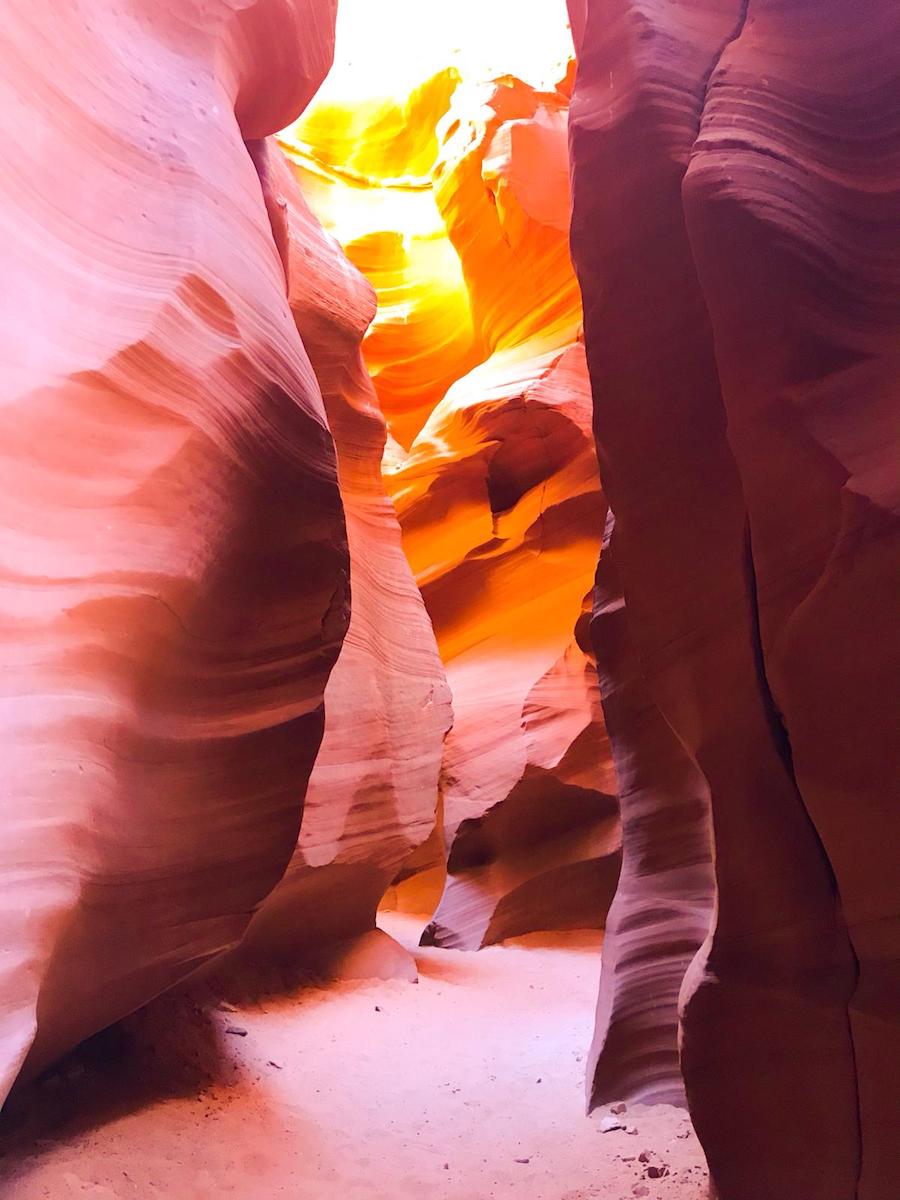
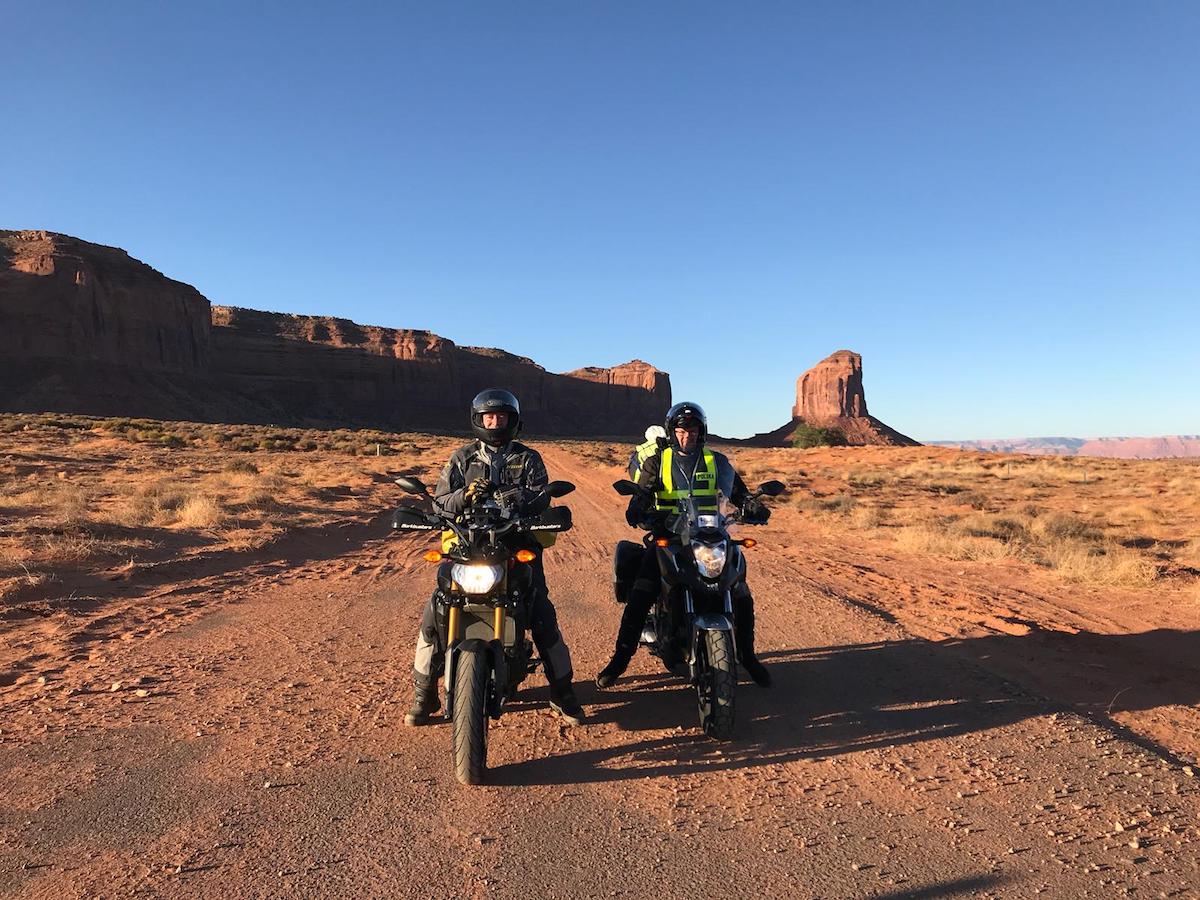


 (5 / 5)
(5 / 5)  (4 / 5) This is really a combination of rider preference and correct setup for the weight I carried. The XT250 suspension is very soft out of the crate, and RaceTech hadn’t done a lot of XT250s for Round-the-World travel by a 6-foot-plus, 200 pound guy with a lot of off-road experience (let’s face it, that’s not the intended market for this bike). So I wasn’t expecting much when I contacted Matt Wiley at RaceTech to inquire about valving and springs for this old-school-style suspension. Matt was able to put together a set of RaceTech’s Gold Valves and stiffer springs (adapters needed for the rear shock) that worked great. The front fork set-up was spot-on and worked fantastic over the corrugated dirt roads (“ripio”) in Argentina as well as just carving through the paved mountain passes in South America and Europe. The rear shock required a bit more fiddling, and probably needs a slightly softer spring than the one I chose.
(4 / 5) This is really a combination of rider preference and correct setup for the weight I carried. The XT250 suspension is very soft out of the crate, and RaceTech hadn’t done a lot of XT250s for Round-the-World travel by a 6-foot-plus, 200 pound guy with a lot of off-road experience (let’s face it, that’s not the intended market for this bike). So I wasn’t expecting much when I contacted Matt Wiley at RaceTech to inquire about valving and springs for this old-school-style suspension. Matt was able to put together a set of RaceTech’s Gold Valves and stiffer springs (adapters needed for the rear shock) that worked great. The front fork set-up was spot-on and worked fantastic over the corrugated dirt roads (“ripio”) in Argentina as well as just carving through the paved mountain passes in South America and Europe. The rear shock required a bit more fiddling, and probably needs a slightly softer spring than the one I chose. (3.5 / 5) The o
(3.5 / 5) The o (4.5 / 5)
(4.5 / 5)  (3 / 5)
(3 / 5) (2.5 / 5)
(2.5 / 5) 








